These griddle sourdough English muffins are hearty, flavorful, and a wonderful way to use up extra sourdough starter.
There’s something special about waking up to the smell of homemade English muffins sizzling on a cast iron skillet. On the homestead, these little rounds of dough aren’t just breakfast. They’re part of the rhythm of life, a simple pleasure that transforms your active sourdough starter into something nourishing and versatile.
Sourdough Discard Recipe
If you’ve ever wanted a sourdough recipe beyond sourdough bread, this easy recipe is a great way to use your starter or sourdough discard. The best part is my family loves these.
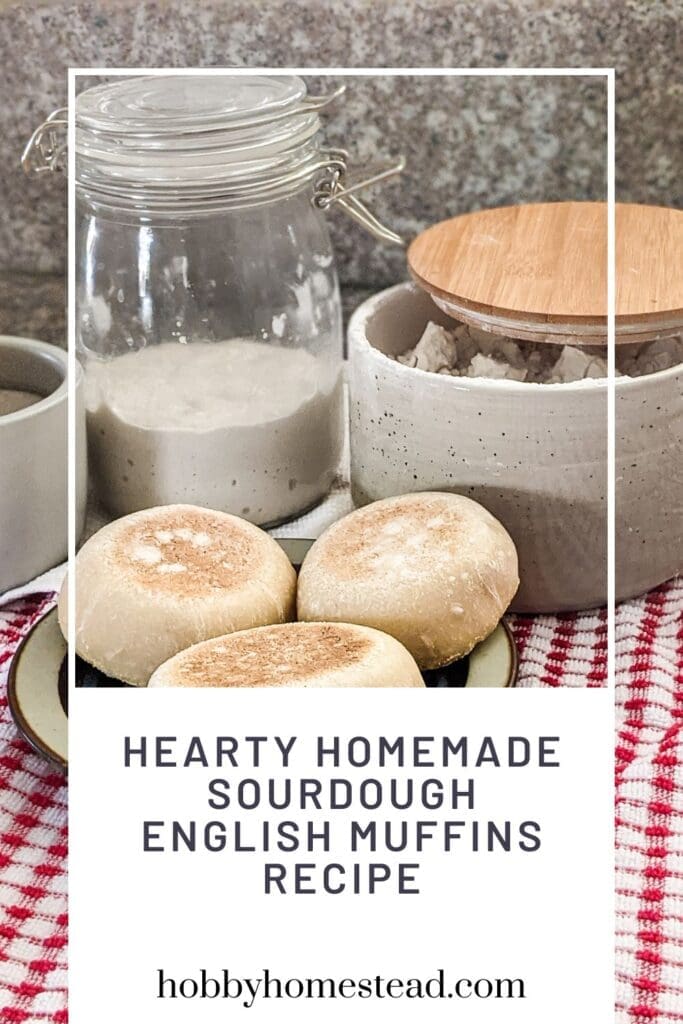
Whether you’re making breakfast sandwiches, Eggs Benedict, or simply splitting them with a pat of butter and maple syrup, these muffins are soft, chewy, and perfectly golden brown.
Even for the first time making homemade English muffins, this recipe is approachable. With a little patience, you’ll have best English muffins that rival store-bought brands. But we think they have more flavor and better texture.
Hearty Homemade Sourdough English Muffins Recipe
As an Amazon Associate I earn from qualifying purchases.
Equipment
Ingredients
- 1/2 Cup Active Sourdough Starter
- 1 Cup Warm Milk or water, room temperature, no more than 110° F
- 2 Tablespoons Honey or sugar
- 2 ½ Cups Flour can be a mix of white flour, whole wheat flour, and all-purpose flour
- 1 Teaspoon Salt
- 2 Tablespoons Butter Softened or olive oil
- Cornmeal for dusting
Instructions
- Pour milk into a small sauce pan. Heat on medium-low until simmering. Remove from heat and whisk in the butter and honey. Cool until 100ºF.1 Cup Warm Milk, 2 Tablespoons Honey, 2 Tablespoons Butter
- In a large mixing bowl or the bowl of a stand mixer with the dough hook attachment, combine your active starter, warm milk, butter, and honey. Gradually stir in the flour and salt until a slightly sticky dough forms. Mix together the dough on medium speed for about 7 minutes. Scrape down the sides of the bowl if needed.1/2 Cup Active Sourdough Starter, 2 ½ Cups Flour, 1 Teaspoon Salt
- At first, the dough will be sticky and wet. As it’s mixed, it will become cohesive and not stick to the sides.
- Transfer to a medium bowl that has been slightly oiled. Cover with plastic wrap or a tea towel and let rest at room temperature.
- First Rise / Bulk Fermentation. Let the dough rise in a warm place for 5–12 hours (overnight works perfectly). By the next morning, the dough should be bubbly, airy, and ready to shape. This long bulk fermentation is what gives the muffins their classic tangy flavor and soft, chewy texture. The dough should have doubled in size and should be smooth.
- The day you are ready for baking. Prepare a large baking sheet or two half sheet pans with parchment paper and sprinkle fine corn meal all on top of the parchment paper to prevent sticking.Cornmeal for dusting
- Shape the Muffins. Turn the dough onto a lightly floured work surface. Divide into equal pieces (about 10–12 dough balls). You can use your hands to shape each piece of dough into a ball or the friction of the countertop to roll the dough round. Flatten slightly to about ¾ inch thick.
- Second Rise. Cover with a tea towel for the second rise, about 1–2 hours, until puffy. They should be doubled in size, spread out some on the pan, and feel full of air. Alternatively, you can roll out to about ½-inch thickness or 3/4-inch thickness and use a biscuit cutter to cut into about 4-inch rounds. See the notes section if you want to skip the second rise.
- Cook on the Griddle. Heat a cast iron skillet or electric griddle over medium-low heat. Place the muffins on the hot surface, leaving space between each. Cook the first side for 5–6 minutes, then flip to the second side until golden brown and cooked through. Avoid high heat so the top of the dough doesn’t burn while the center remains undercooked. Alternatively, you could cook 2 minutes each side and finish cooking the insides by placing the partially cooked muffins on a baking sheet and baking them for 10 minutes at 350ºF.
- Cool and Serve. Transfer muffins to a wire rack to cool slightly. Serve warm with butter, jam, peanut butter, or use them for Eggs Benedict and breakfast sandwiches.
Notes
Tips for the Best Results
- Room temperature ingredients give the dough a consistent rise.
- Use cornmeal and parchment paper to prevent sticking while rising.
- The long first rise develops the tangy flavor that makes sourdough recipes special.
- For longer storage, keep cooled muffins in an airtight container at room temperature for 3–4 days or freeze for up to 3 months.
- Mix 1 Teaspoon baking soda into 2 Tablespoons of luke warm water or milk first. Then gently knead it into the dough. This helps distribute it evenly.
- Bake or griddle the muffins right after adding the soda. Don’t let them sit too long or you’ll lose that quick rise.
- Expect a slightly less tangy flavor since the bulk fermentation and second rise are shortened.
Griddling vs. Baking English Muffins
Traditionally, homemade sourdough English muffins are cooked on a skillet over medium-low heat. Griddling gives them their classic flat exteriors with crisp, slightly browned edges. However, if you find that your muffins tend to burn before the inside cooks through, you can finish them in the oven. After griddling each first side and second side for a few minutes until lightly golden brown, transfer them to a parchment-lined baking sheet and bake at 350°F for about 10 minutes. This step ensures the centers stay fluffy and soft while still achieving the familiar English muffin look.Nutrition
What Makes an Active Sourdough Starter
If your starter doesn’t meet these benchmarks, your muffins may not rise as well or may have a denser texture.
- An active sourdough starter has been fed within the last 4–12 hours.
- Has doubled in volume and looks airy and bubbly.
- Passes the simple float test (a spoonful of starter floats in water)
The good thing is, even if your starter isn’t at peak strength, you can still use it to make sourdough discard recipes.
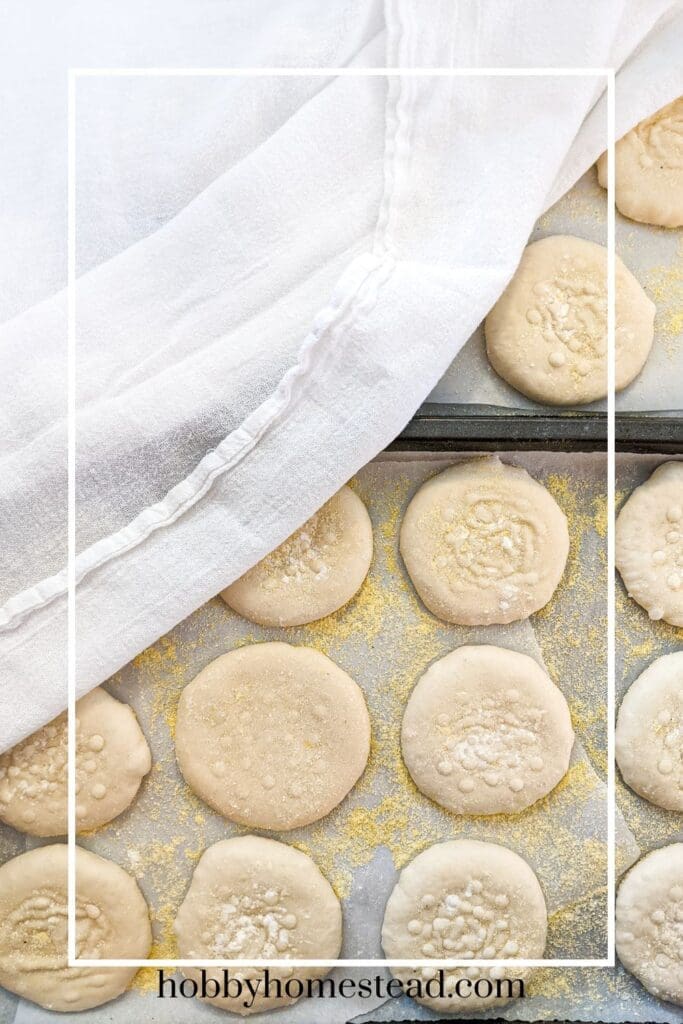
How to Turn Your Oven into a Proofing Box
Getting a steady rise from your dough often depends on ambient temperature. If your kitchen is cooler, you can easily make your own proofing box using your oven. Simply preheat the oven to the lowest setting, then immediately turn it off.
The oven should feel warm—not hot—when you place your muffins inside to rise. Cover with plastic wrap or a tea towel to keep the dough from drying out. Let the dough balls proof until puffy.
This technique helps maintain a warm place for the first rise or second rise, ensuring your muffins develop the right fluffy texture.
Creative Ways to Use Sourdough English Muffins
- Classic breakfast. Toasted with butter and jam or honey.
- Eggs Benedict. Use for a homestead twist on a traditional brunch favorite.
- Breakfast sandwiches. Layer with eggs, cheese, and bacon or sausage.
- Mini pizzas. A fun and quick way to use up leftovers.
- Snack. Spread with peanut butter and fresh fruit.
- Bread substitute. Perfect for lunch sandwiches or picnic meals. Even hamburger buns.
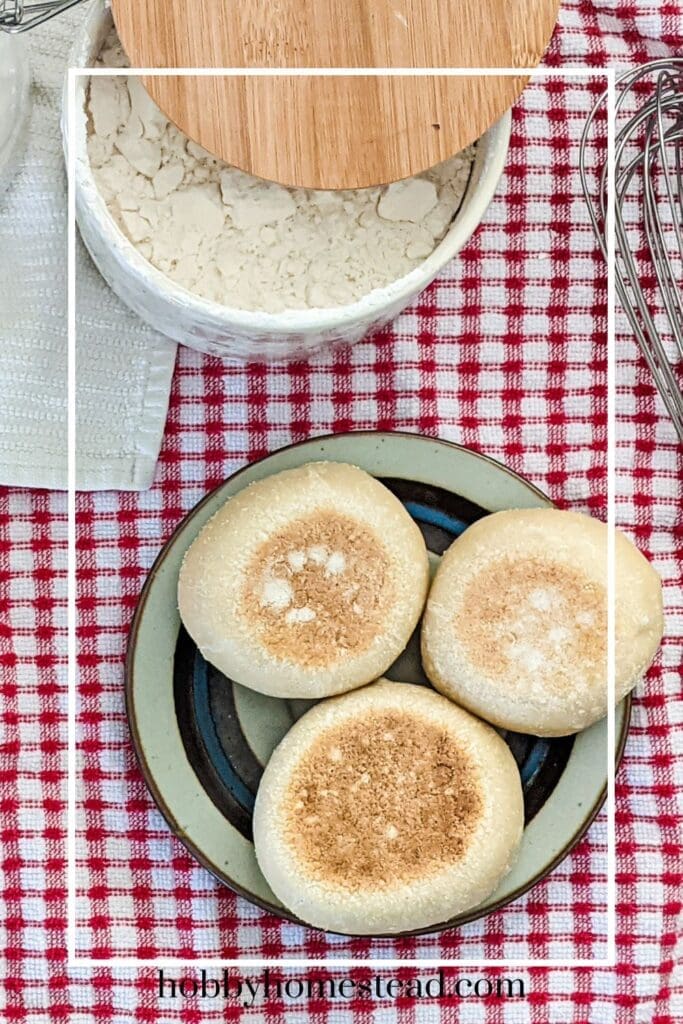
Storage and Freezing
Freshly cooked sourdough English muffins will stay soft for about 3–4 days when stored in an airtight container or bread bag at room temperature.
For longer storage, freeze them after cooling completely. Place in a freezer bag with parchment paper between each muffin to prevent sticking. They’ll last up to 3 months in the freezer, and you can reheat them straight from frozen in the toaster or oven.
With a little planning, this recipe can fit seamlessly into your meal planning. Once you try it, you’ll see why this is one of the best sourdough recipes for your breakfast rotation.


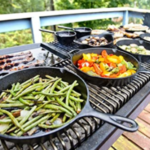

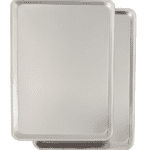


A delicious English muffin recipe using the sourdough discard.